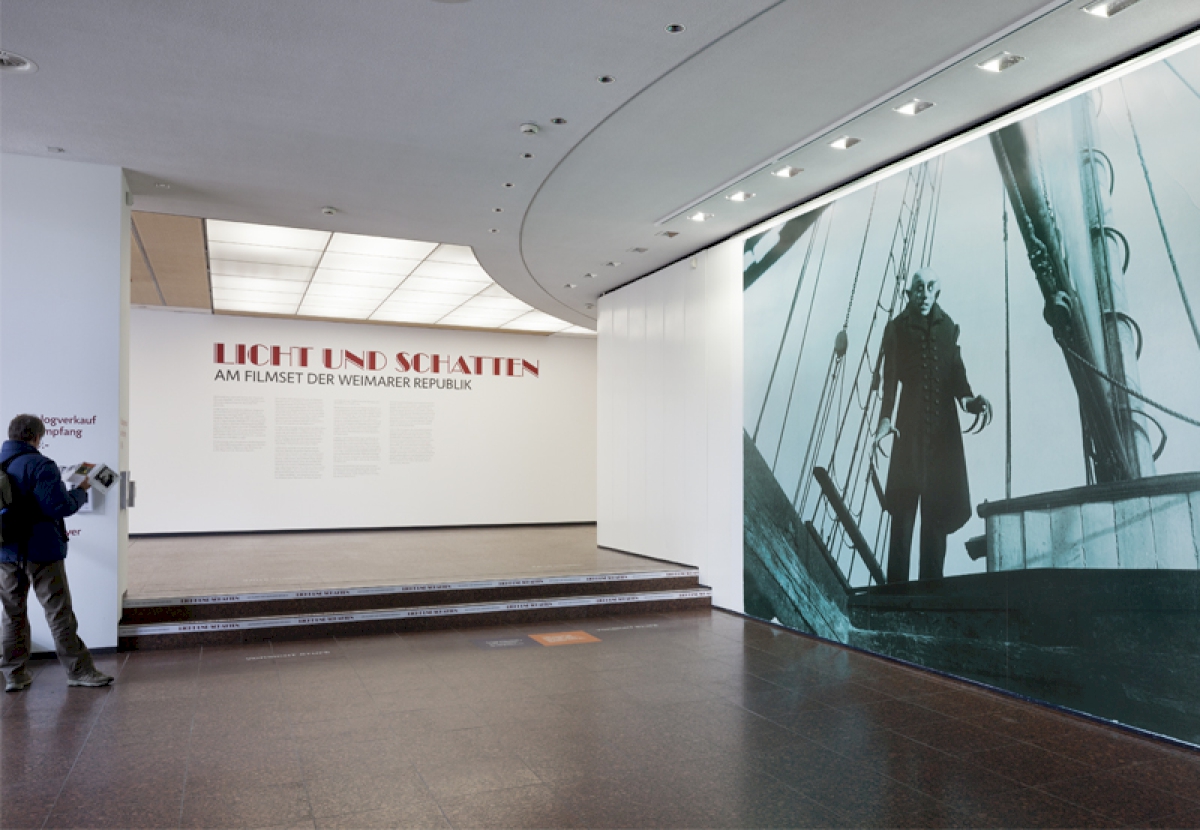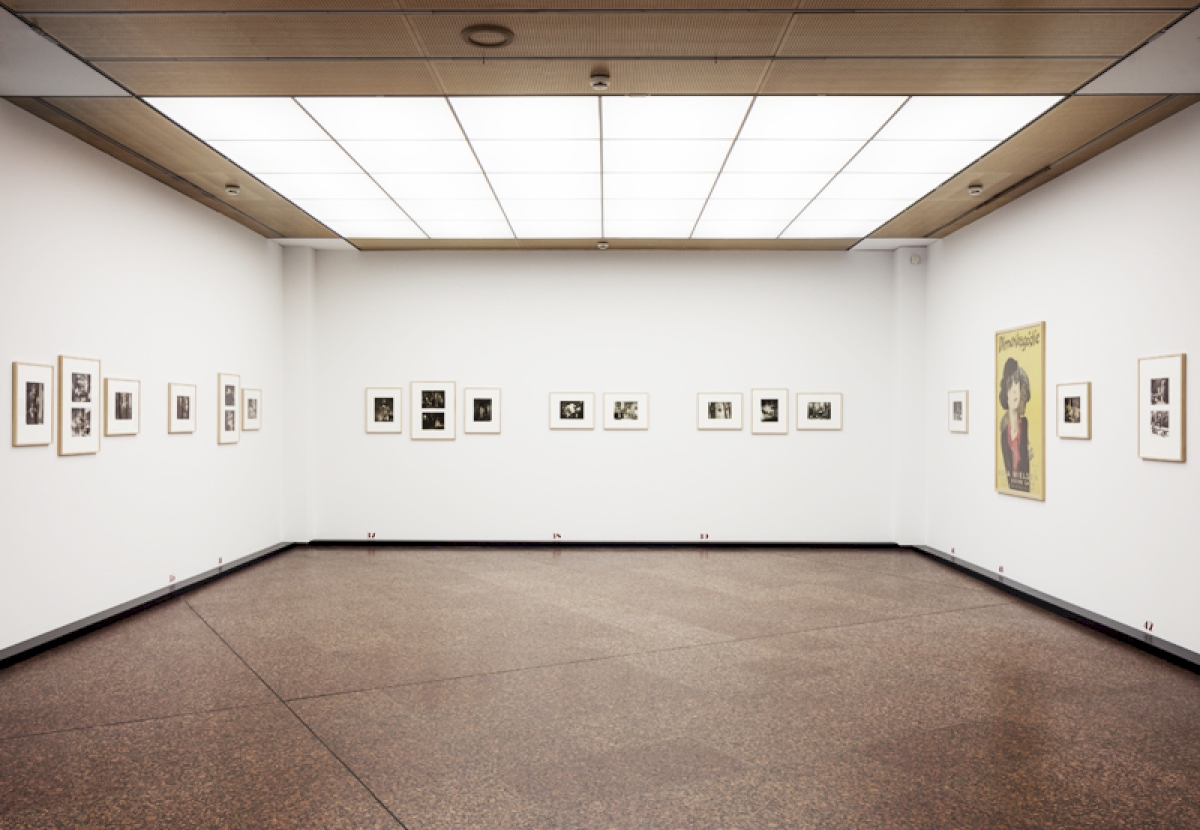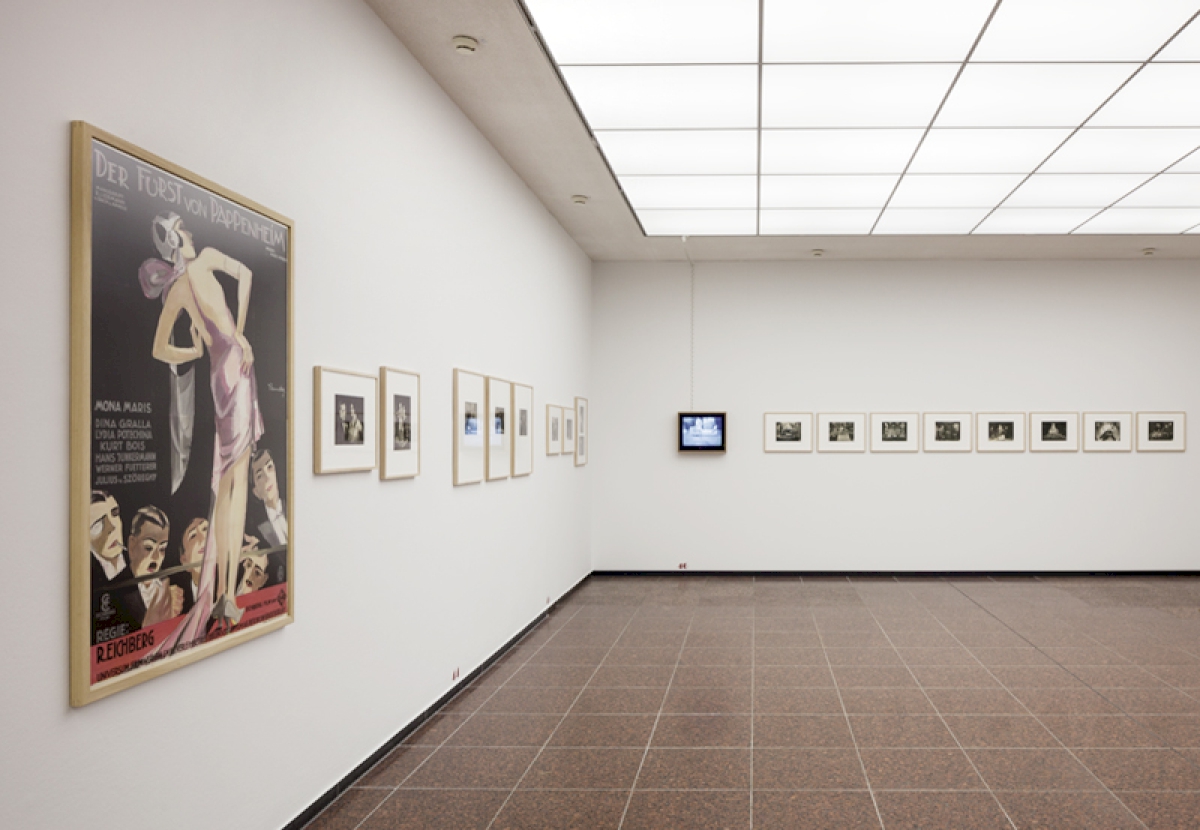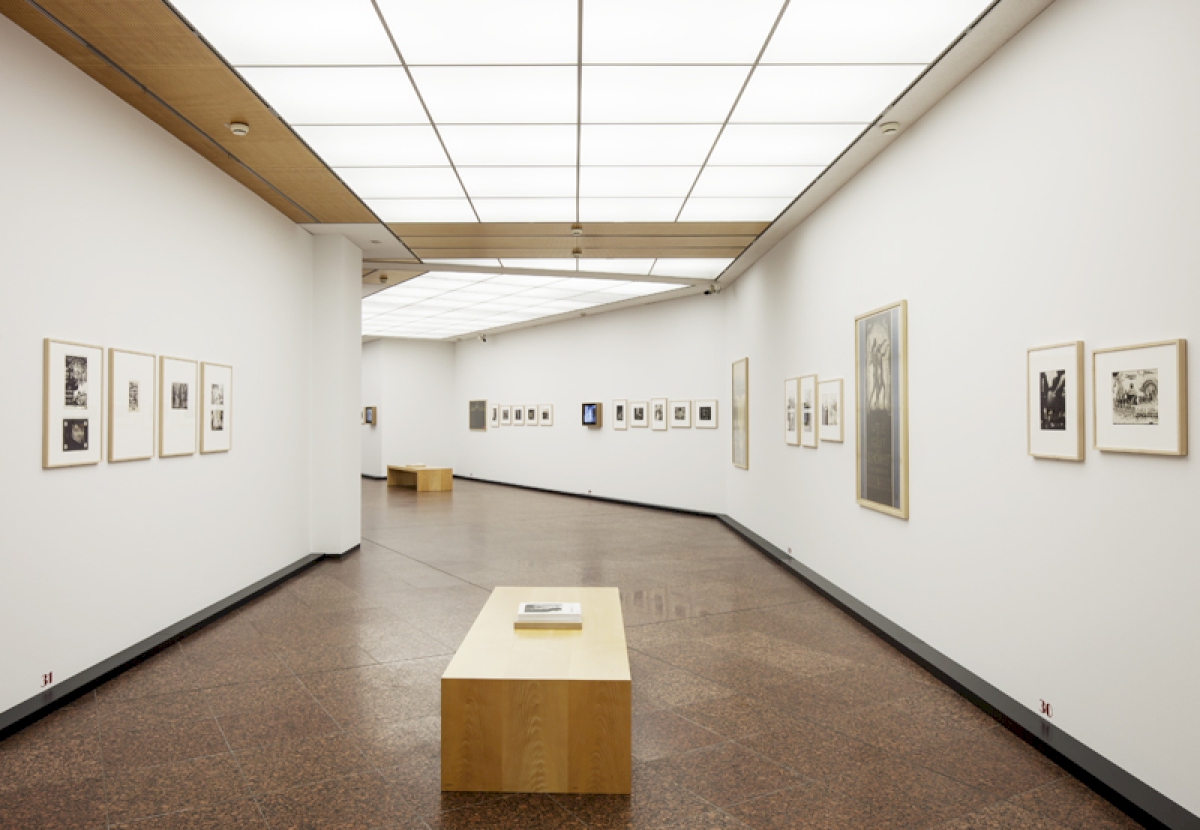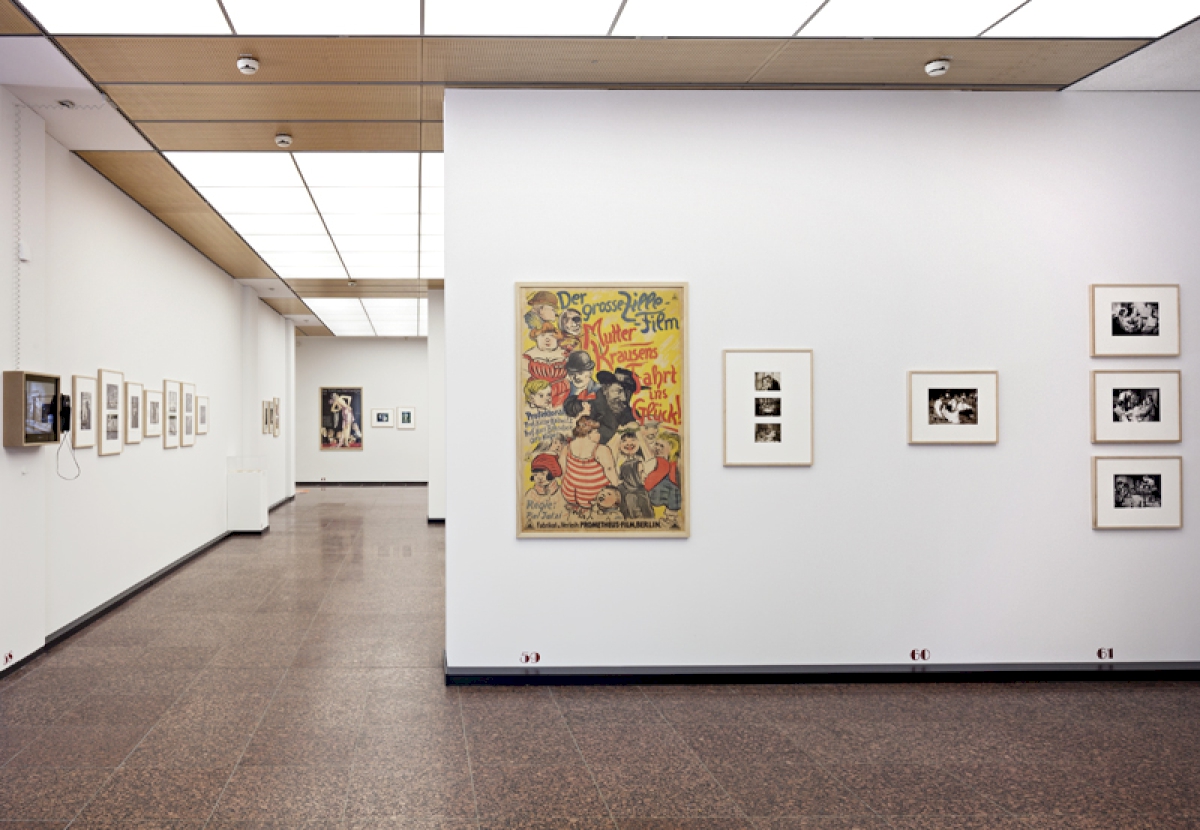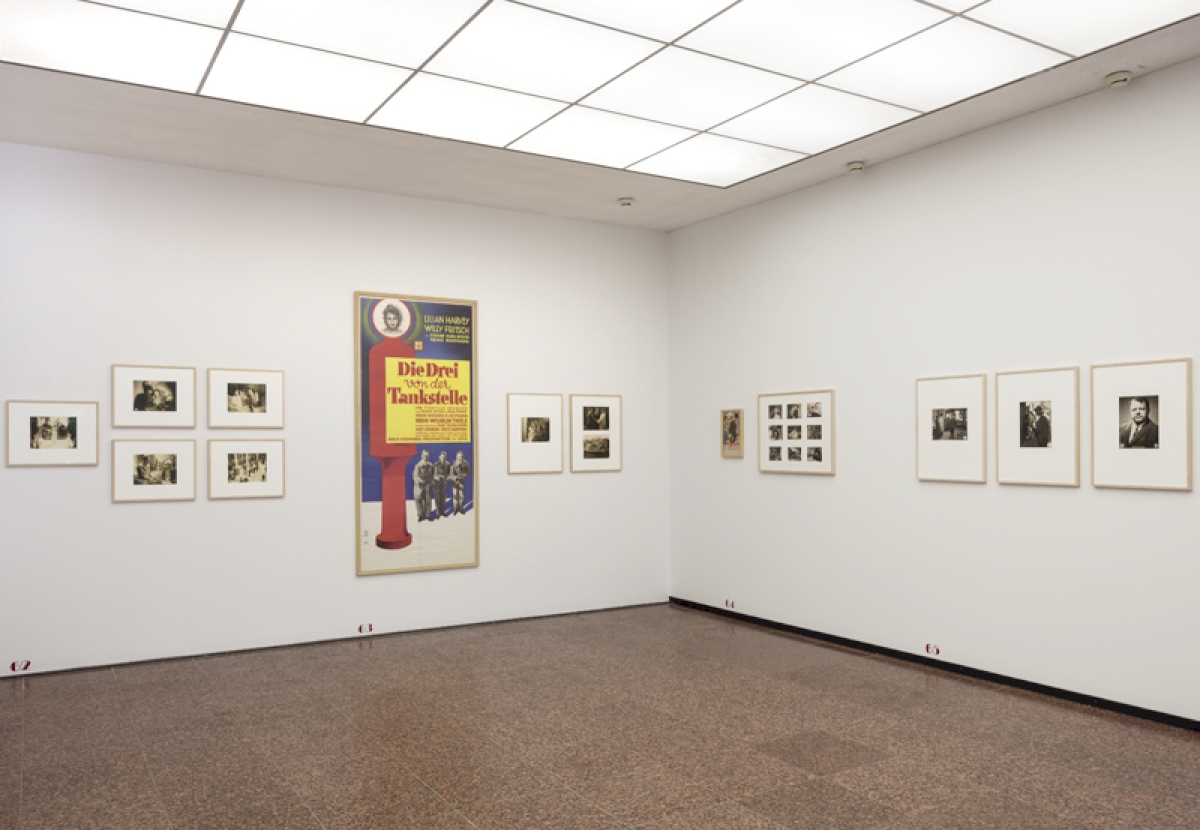Licht und Schatten. Am Filmset der Weimarer Republik.
The exhibition “Licht und Schatten, am Filmset der Weimarer Republik” is a voyage of discovery to an especially creative phase of German cinematic history. Grand emotions and imminent dangers as well as contemporary themes and visions of the future were translated into moving pictures. Movies like Nosferatu, Metropolis, The Blue Angel, and The Cabinet of Dr. Caligari established benchmarks in cinematographic expression. This exciting chapter of German cinematic history came to an abrupt end when Hitler came to power. Directors like Friedrich Wilhelm Murnau, Fritz Lang, and Josef von Sternberg departed Germany and took their know-how, their visual ideas, and their tradition with them to the United States – from whence they would convey them to the entire world.
Conceived in cooperation with the Deutsche Kinemathek, Berlin, the exhibition presents approximately 250 film stills and original posters from over 60 movies by the great directors of the Weimar Republic. Lasting fourteen years and six months, the Weimar period represented a great age of German cinema. Uncertainty and economic hardship were rampant following the First World War. On the other hand, people yearned for stories about far-away places, stories that can only be told in movies. Historical dramas, comedies, detective serials, and adventure films predominated. Of course, most interest was focused on the actresses and actors rather than on the directors.
Henny Porten, Asta Nielsen, Lil Dagover, and Pola Negri were highly venerated actresses during the early twenties. The big male stars were Emil Jannings, Harry Liedtke, and Conrad Veidt. During the early thirties, Elisabeth Bergner, Marlene Dietrich, and Lilian Harvey as well as Hans Albers, Willy Fritsch, and Gustav Fröhlich were extremely popular. Viewed in retrospect, the films of the Weimar period bring to mind the names of great directors and famous movie titles. The careers of Ernst Lubitsch, Fritz Lang, and Friedrich Wilhelm Murnau were just beginning; they were later joined by Georg Wilhelm Pabst, Robert Siodmak, and Max Ophüls. They helped German cinema attain worldwide recognition such as it had never before, nor has since, enjoyed. Many of them were forced into exile in 1933 because they were of Jewish extraction. The famous films of the period include The Cabinet of Dr. Caligari, Nosferatu: A Symphony of Horror, Joyless Street, Metropolis, The Blue Angel, M, and Kuhle Wampe. The transition from silent movies to talkies occurred around 1929/30.
The Weimar period was dominated by two artistic currents: expressionism and the New Objectivity. The traumata of the First World War are of course evident in the movies and their subtexts. The horror of Dr. Caligari and Nosferatu, the melodramatics of Joyless Street and Pandora’s Box are the results of the war experience. Unemployment and housing shortage are reflected in the subject matter of Mother Krause’s Journey to Happiness, Kuhle Wampe, and I by Day, You by Night. Screen adaptations of literature and plays such as Rose Bernd, Buddenbrooks, and Berlin Alexanderplatz are documents of the period. In the “Kulturfilm” Ways to Strength and Beauty, one recognizes aspirations; in the montage film, Berlin: Symphony of a Metropolis one recognizes attitudes towards life; and in the avant-garde motion picture People on Sunday, one recognizes the realities of the second half of the 1920’s. In Der Sonderling, Karl Valentin embodies the universal, terminally obstinate man. Prototypical comedies of the period are The Oyster Princess, The Prince of Pappenheim, and The Three from the Filling Station. Congress Dances was a classic in a genre all its own, the movie operetta, and featured Lilian Harvey and Willy Fritsch.
Still photography emerged for one reason only, and to this day, it serves only one purpose: to promote movies. The production companies distribute the photos to the press and movie theaters in order to lure audiences into the movie houses. Funny situations are pictured for comedies; futuristic visions for science fiction movies; tense faces or sinister figures for crime movies or thrillers. Key situations, compelling atmospheres, and the principal performers are depicted. Even in the early days of cinema, still photos were sent to a graphic designer, who used them to create the first movie posters. Later on, graphic designers drew eye-catching movie scenes in a dramatic style and then added typeface bearing the film title, distributor, and cast. The more abstract and distinct the graphic art, the more artistic the poster. There were also hybrid forms of photos and graphics, photomontages, and plain movie posters. In all cases, the still photo provided the source material. Still photos can be taken during shooting or separately posed, and ideally, they portray a scene that is characteristic for the film and also actually appears in the movie.
The Motion Pictures
Carmen (1918), Veritas vincit (1919), The Oyster Princess (1919), Madame Du Barry (1919), Rose Bernd (1919), Unheimliche Geschichten (1919), The Doll (1919), The Mistress of the World (1919/20), The Cabinet of Dr. Caligari (1920), Kohlhiesels Töchter (1920), Von morgens bis Mitternacht (1920), Genuine (1920), The Golem: How He Came into the World (1920), Anna Boleyn (1920), Hamlet (1921), The Wild Cat (1921), Destiny (1921), Hintertreppe (1921), Nosferatu (1922), Dr. Mabuse the Gambler (1922), Lucrezia Borgia (1922), One Glass of Water (1923), Buddenbrooks (1923), Warning Shadows (1923), The Street (1923), New Year’s Eve (1924), Die Nibelungen (1924), Michael (1924), Waxworks (1924), The Last Laugh (1924), The Chronicles of the Gray House (1925), Ways to Strength and Beauty (1925), Joyless Street (1925), Slums of Berlin (1925), Variety (1925), Tartuffe (1926), Two Brothers (1926), Secrets of a Soul (1926), The Adventures of Prince Achmed (1926), Faust (1926), The Holy Mountain (1926), Metropolis (1927), Dirnentragödie (1927), The Prince of Pappenheim (1927), Berlin: Symphony of a Metropolis (1927), The Love of Jeanne Ney (1927), Doña Juana (1928), Spies (1928), Refuge (1928), Homecoming (1928), Looping the Loop (1928), Pandora’s Box (1929), Asphalt (1929), The Wonderful Lies of Nina Petrovna (1929), The Woman One Longs For(1929), Diary of a Lost Girl (1929), The White Hell of Pitz Palu (1929), Woman in the Moon (1929), Karl Valentin, Der Sonderling (1929), Mother Krause’s Journey to Happiness (1929), People on Sunday (1929), The Blue Angel (1930), The Three from the Filling Station (1930), The Threepenny Opera (1930), M (1931), Congress Dances (1931), Berlin-Alexanderplatz (1931), Mädchen in Uniform (1931), Emil and the Detectives (1931), Kuhle Wampe (1932), I by Day, You by Night (1932), Liebelei (1933)
The Directors
Ludwig Berger, Kurt Bernhardt, Carl Boese, Erik Charell, Paul Czinner, Carl Theodor Dreyer, Slatan Dudow, Ewald André Dupont, Richard Eichberg, Arnold Fanck, Carl Froelich, Svend Gade, Arthur von Gerlach, Karl Grune, Alfred Halm, Walter Jerven, Leopold Jessner, Piel/Phil Jutzi, Uwe Jens Krafft, Gerhard Lamprecht, Fritz Lang, Paul Leni, Ernst Lubitsch, Karl Heinz Martin, Joe May, Friedrich Wilhelm Murnau, Max Ophüls, Richard Oswald, Georg Wilhelm Pabst, Lupu Pick, Wilhelm Prager, Bruno Rahn, Lotte Reiniger, Arthur Robison, Walther Ruttmann, Leontine Sagan, Heinz Schall, Hanns Schwarz, Robert Siodmak, Josef von Sternberg, Wilhelm Thiele, Edgar G. Ulmer, Paul Wegener, Robert Wiene
The Actors
Alfred Abel, Hans Albers, Albert Bassermann, Paul Bildt, Curt Bois, Hans Brausewetter, Ernst Busch, Benjamin Christensen, Paul Conradi, Ernst Deutsch, Gustav Diessl, Wilhelm Dieterle, Gösta Ekman, Peter Esser, Julius Falkenstein, Rudolf Forster, Willy Fritsch, Gustav Fröhlich, Otto Gebühr, Heinrich George, Kurt Gerron, Bernhard Goetzke, Alexander Granach, Gustaf Gründgens, Paul Hansen, Lars Hanson, Paul Hartmann, Ernst Hofmann, Oskar Homolka, Paul Hörbiger, Emil Jannings, Victor Janson, Walter Janssen, Rudolf Klein-Rogge, Eugen Klöpfer, Fritz Kortner, Werner Krauß, Leopold von Ledebur, Franz Lederer, Wolfgang Liebeneiner, Harry Liedtke, Theo Lingen, Peter Lorre, Paul Otto, Ernst Petersen, Harry Piel, Klaus Pohl, Fritz Rasp, Paul Richter, Johannes Riemann, Heinz Rühmann, Hans Adalbert Schlettow, Max Schreck, Reinhold Schünzel, Walter Slezak, Hermann Thimig, Luis Trenker, Hans-Heinrich von Twardowski, Karl Valentin, Conrad Veidt, Otto Walburg, Gustav von Wangenheim, Warwick Ward, Paul Wegener, Rolf Wenkhaus, Otto Wernicke, Eduard von Winterstein, Holmes Zimmermann
The Actresses
Betty Amann, Fern Andra, Roma Bahn, Anita Berber, Elisabeth Bergner, Mathilde Brandt, Louise Brooks, Mady Christians, Lil Dagover, Maly Delschaft, Marlene Dietrich, Tilla Durrieux, Lien Dyers, Greta Garbo, Valeska Gert, Nora Gregor, Ilka Grüning, Käte Haack, Dolly Haas, Liane Haid, Lilian Harvey, Brigitte Helm, Lucie Höflich, Camilla Horn, Brigitte Horney, La Jana, Edith Jéhanne, Hilde Jennings, Jenny Jugo, Liesl Karlstadt, Margarete Kupfer, Inge Landgut, Mona Maris, Gerda Maurus, Mia May, Erna Morena, Renate Müller, Käthe von Nagy, Pola Negri, Asta Nielsen, Aud Egede Nissen, Ossi Oswalda, Dita Parlo, Henny Porten, Edith Posca, Lya de Putti, Frida Richard, Leni Riefenstahl, Adele Sandrock, Lyda Salmanova, Alexandra Schmitt, Magda Schneider, Margarethe Schön, Greta Schröder, Hertha Thiele, Helga Thomas, Ilse Trautschold, Olga Tschechowa, Luise Ullrich, Emilie Unda, Rosa Valetti, Hertha von Walther, Gertrud Welcker, Ruth Weyher, Dorothea Wieck, Martha Wolter
Exhibition Catalog
LICHT UND SCHATTEN
Die großen Stumm- und Tonfilme der Weimarer Republik
Mehr als 300 Filmbilder von “Mutter Krause” bis “Dr. Mabuse”
Schirmer/Mosel 2012
Curator
Hans Helmut Prinzler

